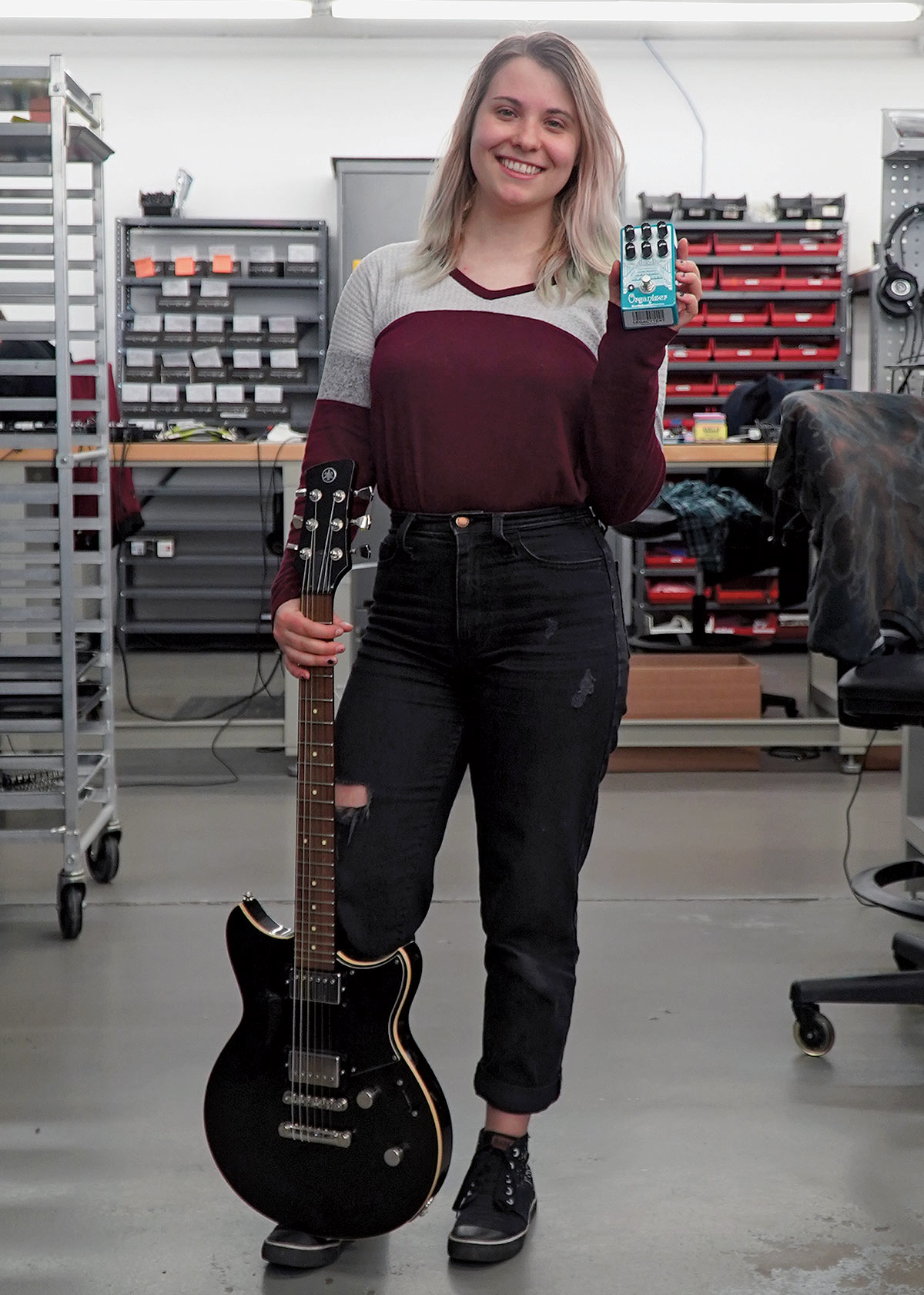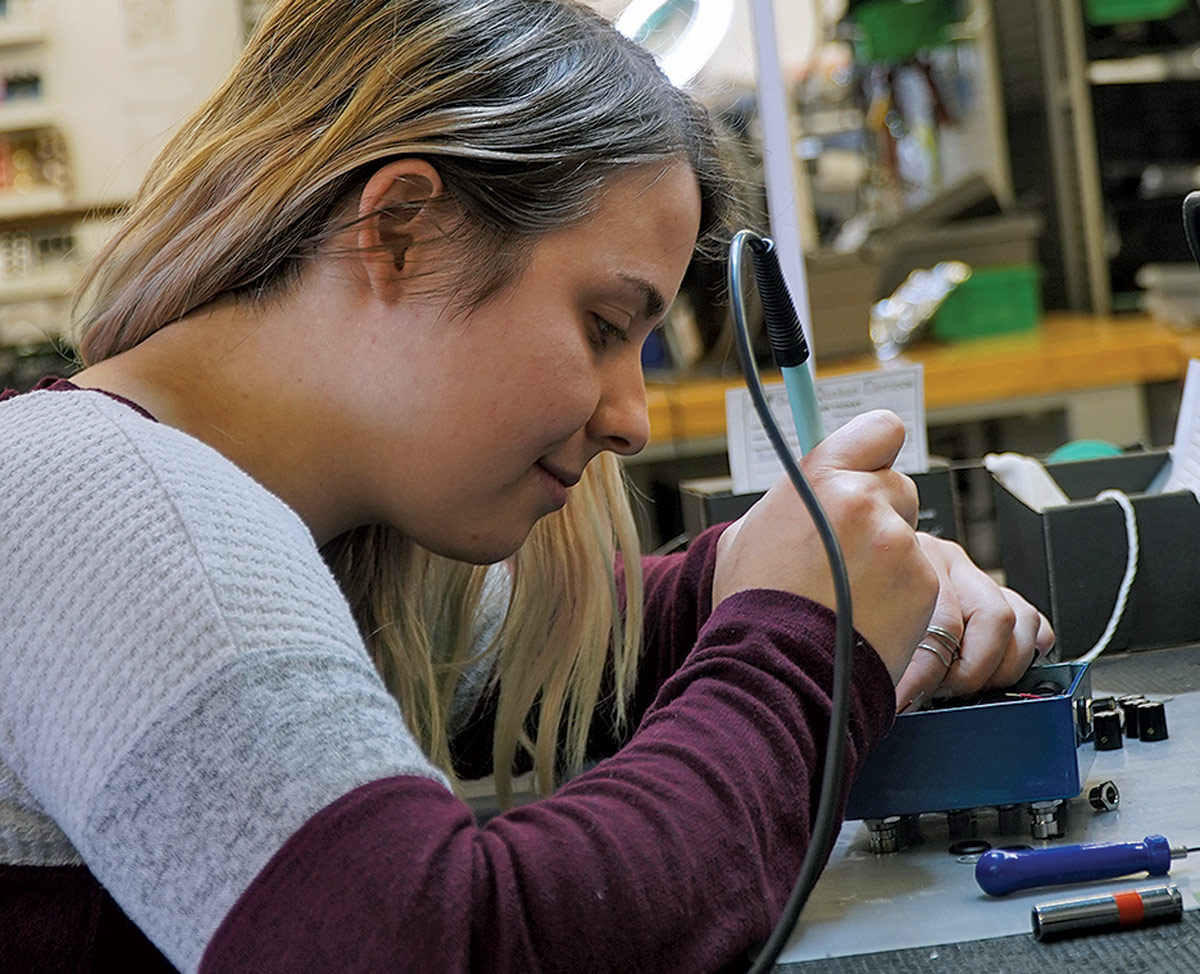A mix of music and physics

Ally Amaral ’19 builds guitar pedals used by Radiohead, Guns N’ Roses, The Strokes
For Ally Amaral ’19, the doubters were nothing new. By now she could quickly pick up on that subtle undertone of skepticism whenever she told people she was studying music and physics.
“I would often get comments that those are two very different things,” she said. “I would have to explain that there’s a science behind how music works. Music is just physics you can hear.”
Amaral, who majored in music and minored in physics, sensed an overlap between the seemingly disparate subjects, but it wasn’t until she came to Wheaton that she discovered a deeper connection.
That, according to the Massachusetts native, was thanks to the college’s interdisciplinary curriculum, and the support faculty members give students to pursue their passions.

“Part of why I chose Wheaton is I knew it would give me the freedom to explore my interests with both of these subjects,” she said. “I had a strong interest whenever we would go over electronics, so I focused my physics classes around that direction. Then taking music theory classes for my music major, I started to draw more connections.”
Amaral now builds and repairs special effects pedals for EarthQuaker Devices, one of the leading guitar pedal manufacturers in the world. They are loved by artists everywhere, including members of Radiohead, The Strokes and Guns N’ Roses.
Recently, she restored a pedal for “Portlandia” actress and musician Carrie Brownstein.
Amaral, who lives in Ohio near EarthQuaker’s headquarters, said Wheaton’s “Physics of Music and Sound” and “Intro to Electronics” courses were particularly influential.
But it wasn’t until she started her independent study with Associate Professor of Music Will Mason that something truly clicked. “That really prepared me the most professionally,” Amaral said. “It really gave me the confidence that I could do this as a career. It was my first taste of building an instrument, being in my own space and learning how to think creatively.”
For her independent study, Amaral created a massive bass instrument by hand and later performed on it using a visual programming language for music.
Mason said working with Amaral has helped him think of more creative ways to intertwine both the aesthetic and technical sides of music in his teaching.
“In terms of raising the profile of this kind of work and showing students what they’re capable of doing at Wheaton, Ally really threw down the gauntlet,” Mason said. “She’s brilliant and fearless. If there was something she wanted to know more about, she would find a way to lay hands on it and just get it done. Getting that hands-on experience is something Wheaton enabled.”
